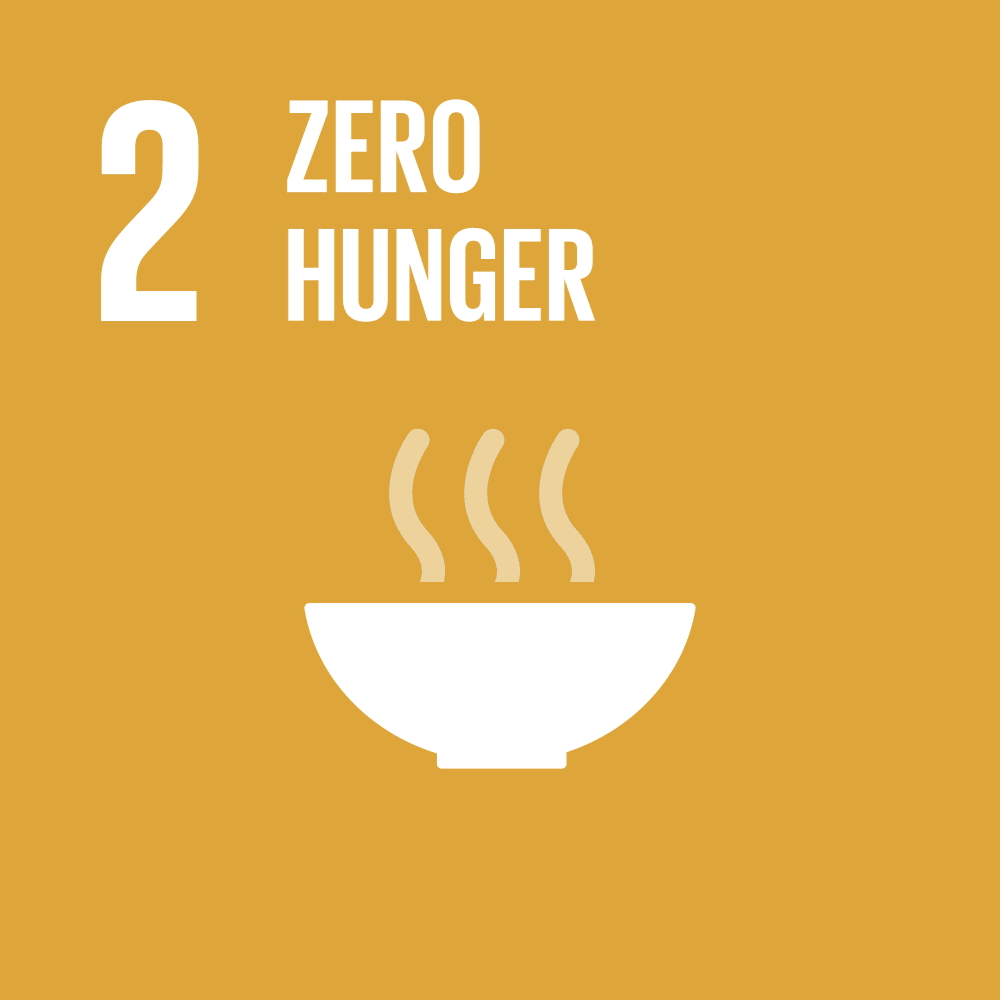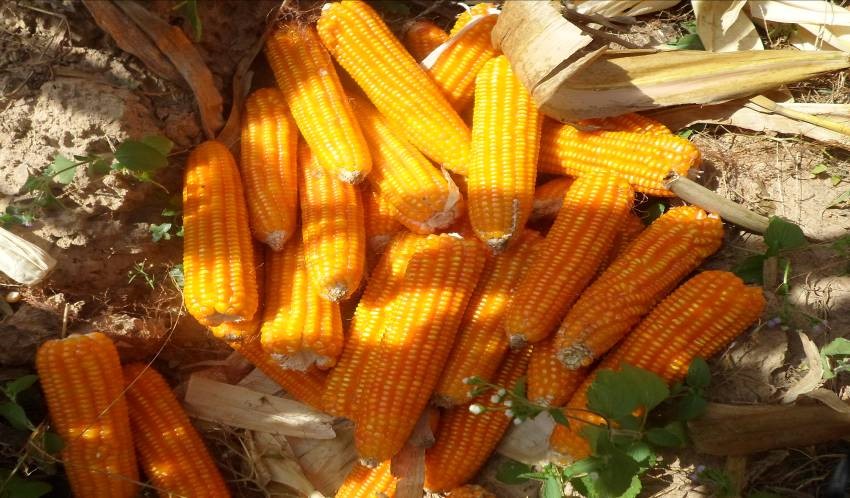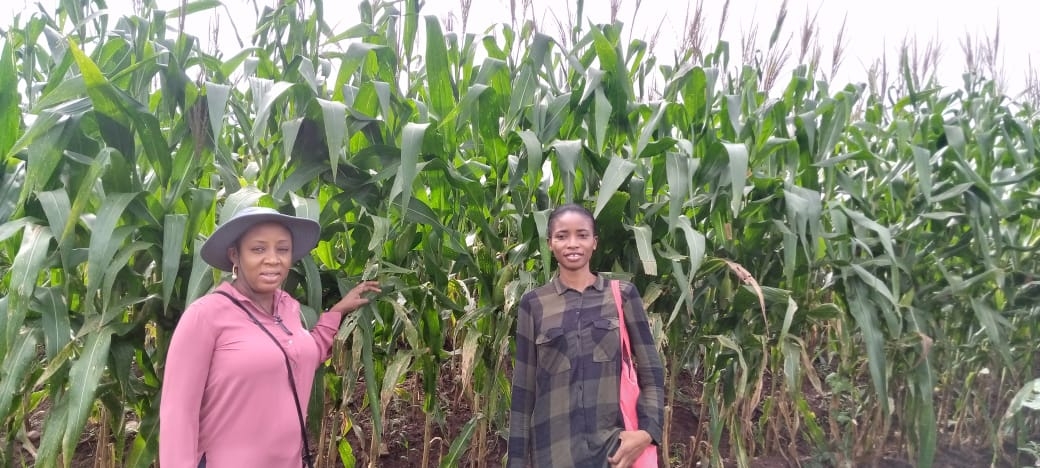+2348034099810 | dvcrti@unilorin.edu.ng dcredit@unilorin.edu.ng
Email: pmsdg@unilorin.edu.ng

MAIZE VARIETIES/ HYBRID RELEASED BY THE UNIVERSITY OF ILORIN, NIGERIA IN COLLABORATION WITH THE INTERNATIONAL INSTITUTE OF TROPICAL AGRICULTURE (IITA) AND OTHER PARTNERS
| NAME | OUTSTANDING CHARACTERISITICS | PICTURES |
| ILOMAZ 1 | Early maturing (90-95 days) Yellow Striga Resistant Tolerant to other foliar diseases (Curvularia, Streak, Rust and Blight) Good Yield Open pollinated variety |   |
| ILOMAZ 2 | Medium maturing Resistant to Striga Tolerant to drought High yielding White Tolerant to other foliar diseases (Curvularia, Streak, Rust and Blight) Open pollinated variety |   |
| ILOMAZ 3 | Medium maturing Resistant to Striga Tolerant to drought High yielding White Tolerant to other foliar diseases (Curvularia, Streak, Rust and Blight) Hybrid |   |
OLAKOJO, OLORUNTOBA OLATAYO (15/68AM005)
COMBINING ABILITY FOR GRAIN YIELD AND POPPING QUALITY IN POPCORN (Zea mays var. everta Sturt.)
April 2023
The acceptability of currently cultivated popcorn varieties in Nigeria is limited by poor yield and popping quality, hence the need for improvement of the germplasm in Nigeria. The study aimed at developing genetically improved version of popcorn varieties, with the objectives to: (i) identify parents with good general combining ability (GCA) and specific combining ability (SCA) for yield and popping qualities; (ii) estimate mid-parent, high-parent and standard heterosis for yield and popping quality among the crosses; and (iii) assess the popcorn hybrids for yield, popping quality, consumer acceptability and nutritional attributes.
A local check and 13 parental lines obtained from the Institute of Agricultural Research and Training, Ibadan were hybridized using Line × Tester mating design to generate 36 hybrids. The hybrids, parental lines and check were evaluated during field trials in 2019 and 2020 at three locations (Ilorin, Orin-Ekiti and Ilora) representing three different agro-ecologies for agronomic performance. Trials were laid out in each location in a Randomized Complete Block Design and replicated three times. Two seeds were sown per hole at a spacing of 75 cm × 50 cm. Popping experiment was carried out using an air popper while proximate analysis was done in the laboratory. Line x Tester analysis was carried out to estimate heterosis, GCA and SCA.
Findings from the study were:
The study concluded that all the popcorn traits investigated in this study were governed by non-additive gene action. The study recommended that hybrids M2×V8, M3×V9 and M1×V7 which combined yield and popping volume can be exploited, registered and released in the Nigeria popcorn industry for enhanced productivity and reduced importation.
ABOLUSORO, PATRICIA FEHINTOLA 16/68AN001
RESPONSE OF SELECTED TOMATO (Solanum lycopersicum) CULTIVARS TO TIME OF PLANTING AND FERTILIZER APPLICATION IN SOUTHERN GUINEA SAVANNAH, NIGERIA
APRIL, 2023
Increasing high demand for tomato (Solanum lycopersicum) and its by-products far outweigh its production in Nigeria. This is probably due to lack of suitable inputs such as improved cultivars, fertilizer and inappropriate time of planting necessary for large scale production. The main objective is to study the response of selected tomato cultivars to time of planting and fertilizer application in Southern Guinea Savannah. The objectives of the study were to: (i) assess the growth, yield and shelf life of tomato cultivars; (ii) select high performing tomato cultivars for the study area; (iii) determine the effect of time of planting and fertilizer application on the performance of selected tomato cultivars; and (iv) evaluate the effects of time of planting and application of fertilizer on the fruit quality and susceptibility to diseases.
The study used both screen house and field experiments. A completely randomized design which comprised twenty (20) tomato cultivars (10 local and 10 hybrids) as treatments with three replications was used for the screen house study in 2017. The field experiments in 2018 and 2019 were laid out in a split-split plot design. The main plots were three times of planting, the sub plots comprised five selected cultivars while the sub-sub plots were three fertilizer application rates (control, 10 t/ha Poultry manure and 150kg/ha NPK 15-15-15). Data were collected on growth; yield and percentage rot and analyzed using inferential statistics. Proximate analyses of the fruits were done using standard laboratory procedures while microbial load was adopted for susceptility level.
The findings of the study were:
The study concluded that the most appropriate time of planting was July. Cobra, Boomerang and Rio Grande were highest performing while application of poultry manure at 10 tons/ ha increased growth, nutritional quality and storability. The study, therefore, recommended these three cultivars be planted in July using 10t/ha poultry manure in the study area.
Name: KOLADE, ISIAKA OYENIYI 97/10AC048
Title: PRODUCTION AND CHARACTERIZATION OF XYLANASE TO IMPROVE THE FEEDING VALUES OF RICE HUSK IN BROILER CHICKEN AND GOATS
February 2023
The study aims at producing xylanase by Aspergillus tubingensis to improve the feeding value of rice husk in broiler chickens and goats. The inability of livestocks to digest high fibre feedstuffs necessitates the need to degrade the cell wall components by using xylanase, thus making the trapped nutrients available. The objectives of the study were to; (i) investigate most suitable substrate for optimal xylanase production, (ii) produce, purify and characterize xylanase produced by Aspergillus tubingensis, (iii) determine the optimum concentration of xylanase required for efficient degradation of rice husk, (iv) estimate the optimum levels of inclusion of xylanase-treated rice husk on broiler chicken’s diet; and (v) evaluate the effects of feeding xylanase-treated rice husk on performance characteristics of West Africa Dwarf goats.
Experiment I investigated the appropriate substrate (carbon source) among agricultural residues and optimized fermentation conditions for maximum xylanase production by Aspergillus tubingensis via solid state fermentation. In experiment II, xylanase was mass produced using corncob as sole substrate, purified and characterized for temperature, pH and heat stability for optimum conditions of maximum activity. Experiment III assessed the potential of xylanase produced for enzymatic degradation of rice husk to improve its nutritional value. Experiment IV evaluated the effects of inclusion levels of dietary treatment containing xylanase-treated rice husk (XTRH) formulated with other ingredients at 0% (control), 5%, 10%, 15% and 20% on the performance of broiler chickens. Experiment V examined the performance of goats fed on graded levels of dietary treatment containing XTRH formulated with other ingredients at 0%, 10%, 20%, 30% and 40%. Data were collected on xylanase yield, fermentation conditions, xylanase activity and stability, fibre degradability, feed consumption, weight gain, feed conversion ratio, nutrient retention, carcass characteristics, organs weight, economics of broilers, nutrient digestibility, ruminal enzyme activity, ruminal fermentation characteristics and performance. Data were determined by one-way Analysis of Variance (α = 0.05) and significant means were compared using Duncan’s Multiple Range Test.
The findings of the studies were that:
The study concluded that xylanase-treated rice husk included in the diets of broiler chickens and goats improved its feeding values and reduced cost of feed. The study recommended the inclusion of XTRH at 20% and 30% in broiler chicken and goat’s diets, respectively.
FALOLA-OLASUNKANMI, JUDITH ADEJOKE 07/10AC143
EFFECT OF WEED INFESTATION AND TIME-OF-DAY INSECTICIDE APPLICATION ON FALL ARMYWORM AND MAIZE YIELD
April 2023
Maize production is affected by several factors such as weeds, insects and most recently fall armyworm (FAW) causing low yields in Nigeria. This study therefore, examined the effect of weed infestation on fall armyworm and maize yield. The objectives of the study were to: (i) ascertain the presence of FAW in the study area; (ii) identify dominant weed species that were natural hosts of FAW; (iii) evaluate the efficiency of weed control methods on FAW infestation and maize yield; and (iv) examine the effect of time-of-day application of insecticide on FAW.
Field trials were conducted at the University of Ilorin Teaching and Research Farm during 2019, 2020 and 2021 seasons. The experiment was a factorial design with a split-split plot arrangement and replicated three times. Maize varieties (Oba-super 6 and Oba-super 4) comprised the main plots, time-of-day application of insecticide (9 am and 4 pm) constituted sub-plots while weed control (pre-atrazine, pre-atrazine+post-Nicosulfuron, pre-metolachlor, pre-metolachlor+post-Nicosulfuron and pre-primextra, 4 weeks of weedy, 3 weeks of weedy, and weed check) were the sub-sub plots. The field was ploughed, harrowed, and ridged; maize seeds were sown at a spacing of 1 m x 0.25 m to give 40,000 plants/ha. Data collected were weed host, weed density and biomass at 3, 6, and 9 weeks after sowing. Number of infested/harvestedplants, yield and yield components of maize at harvest were subjected to analysis of variance. Significant means were separated using new Duncan`s multiple range test at p<0.05. Insect larvae collected from the maize plots were taken to the laboratory for preservation and identification using “four-dot’’ square on the 8th abdominal segment, body length and head capsule widths.
The major findings of the study were:
The study concluded that prolonging the time of weed removal allowed the natural hosts of FAW to dominate, thereby reducing the level of infestation on the maize. The study therefore recommended that farmers should delay weed removal for 3 weeks to reduce FAW infestation and improve maize yield.
OPTIMAL CONTROL OF SORGHUM PEST MATHEMATICAL MODELLING AND ANALYSIS
ISSA, Temitope Issa
(14/68EV013)
February 2023
Pest management is essential to prevent devastating impact on economy, food security, social life, health and biodiversity. Pest control in stored grains such as sorghum, millet and the likes has relied heavily on synthetic insecticides due to their instant effectiveness and ease of application. However, extensive use of chemical insecticides results in envi- ronmental pollution, pest resurgence, and pest resistance. Thus, the need for a control of sorghum pest management that have little or no adverse effect on the environment. This study is aimed at establishing a biological based optimal control model of sorghum pest management. The objectives of the study were to: (i) develop optimal control biological models for the interaction of pests and sorghum species; (ii) test the existence and unique- ness of solution of the model developed; (iii) investigate the local stability of the model equilibrium states; (iv) use the optimal control approach to analyze the system of equa- tions; (v) perform sensitivity analysis of the model; and (vi) validate the results obtained from the developed model. The methodology of mathematical modelling was used for model formulation through the application of the vector-host concept from mathematical epidemiology. Numerical schemes such as Runge Kutta order 4 (RK4) and Differential Transform Method (DTM) were respectively used for model stability and numerical simulation.
The findings of the study were that:
The study concluded that optimal control of sorghum pest is more effective and have little or no adverse effect on the environment. The study recommended that mathematical models for biological and botanical control should be utilized in the brewery and cereal industries.